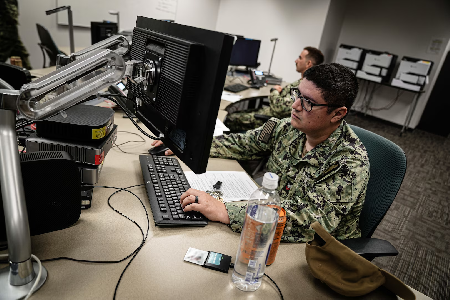When the world went virtual at the start of the pandemic, edtech became a crucial element to help students learn from home.
A year later, the industry is having a strong summer in the DMV. On top of last week’s news of EVERFI nabbing $100 million with a product acquisition, we saw MPower Financing raise $100 million, Vemo acquired Boston-based Edmit and Full Measure Education announced huge expansion plans with a $10 million funding round, all within the past two months.
But the EdTech Evidence Exchange (EEE) — an Arlington-based nonprofit entwined with the University of Virginia that was formerly known as the Jefferson Education Exchange — has some questions about whether institutions are properly using the technology. According to a new report from EEE known as the Edtech Genome Project, pre-pandemic edtech spending was between $26 billion and $41 billion annually, and post-COVID spending is more likely around $100 billion. (A footnote states that this is actually a conservative estimate.)
But EEE estimates that about half of all education technology is used ineffectively, materially underused or unused at all. And there’s little to no info on which tools work where or why, primarily due to a lack of communication across institutions.
“We know for a fact that school environments vary from each other — in ways that matter deeply when it comes to selecting and implementing the tens of billions of dollars worth of technology we buy for our schools,” said Bart Epstein, CEO of the EEE, in a statement. “It is long past time for millions of educators across the country to be able to learn from each other’s experiences using thousands of technologies.”
The report goes on to say that this occurs because there’s a lack of consistency among educators in shared language, mechanisms and incentives to share and document experience with edtech products. But EEE hopes to change this, identifying 10 variables that most likely have the greatest impact on edtech selection and implementation so institutions can spend more effectively. The variables are:
- Vision for teaching and learning
- Selection process
- Teacher agency
- Infrastructure and operations
- Implementation systems and processes
- Staff culture
- Teacher beliefs and knowledge
- Strategic leadership support
- Professional learning
- Competing priorities
“Edtech decision makers currently select and implement technologies with almost no information about what is likely to work in their schools,” the report reads. “They spend tens of billions of dollars each year on edtech that is underused, inequitably used or ineffectively used.”
Plus, according to EEE, following the report, the nonprofit now has the information necessary to create a software platform for teachers and administrators, known as the EdTech Evidence Exchange Platform. The organization said the database will include experiences with various edtech products while also allowing users to offer local context, hopefully sparking the creation of new edtech products or better use of existing ones.
Read the full reportBefore you go...
Please consider supporting Technical.ly to keep our independent journalism strong. Unlike most business-focused media outlets, we don’t have a paywall. Instead, we count on your personal and organizational support.
3 ways to support our work:- Contribute to the Journalism Fund. Charitable giving ensures our information remains free and accessible for residents to discover workforce programs and entrepreneurship pathways. This includes philanthropic grants and individual tax-deductible donations from readers like you.
- Use our Preferred Partners. Our directory of vetted providers offers high-quality recommendations for services our readers need, and each referral supports our journalism.
- Use our services. If you need entrepreneurs and tech leaders to buy your services, are seeking technologists to hire or want more professionals to know about your ecosystem, Technical.ly has the biggest and most engaged audience in the mid-Atlantic. We help companies tell their stories and answer big questions to meet and serve our community.
Join our growing Slack community
Join 5,000 tech professionals and entrepreneurs in our community Slack today!

A new model for thinking about how to grow regional economies: the Innovation Ecosystem Stack

Can the nation’s biggest cyber hub even handle Craiglist founder’s $100M security pledge?

20 tech community events in October you won’t want to miss



